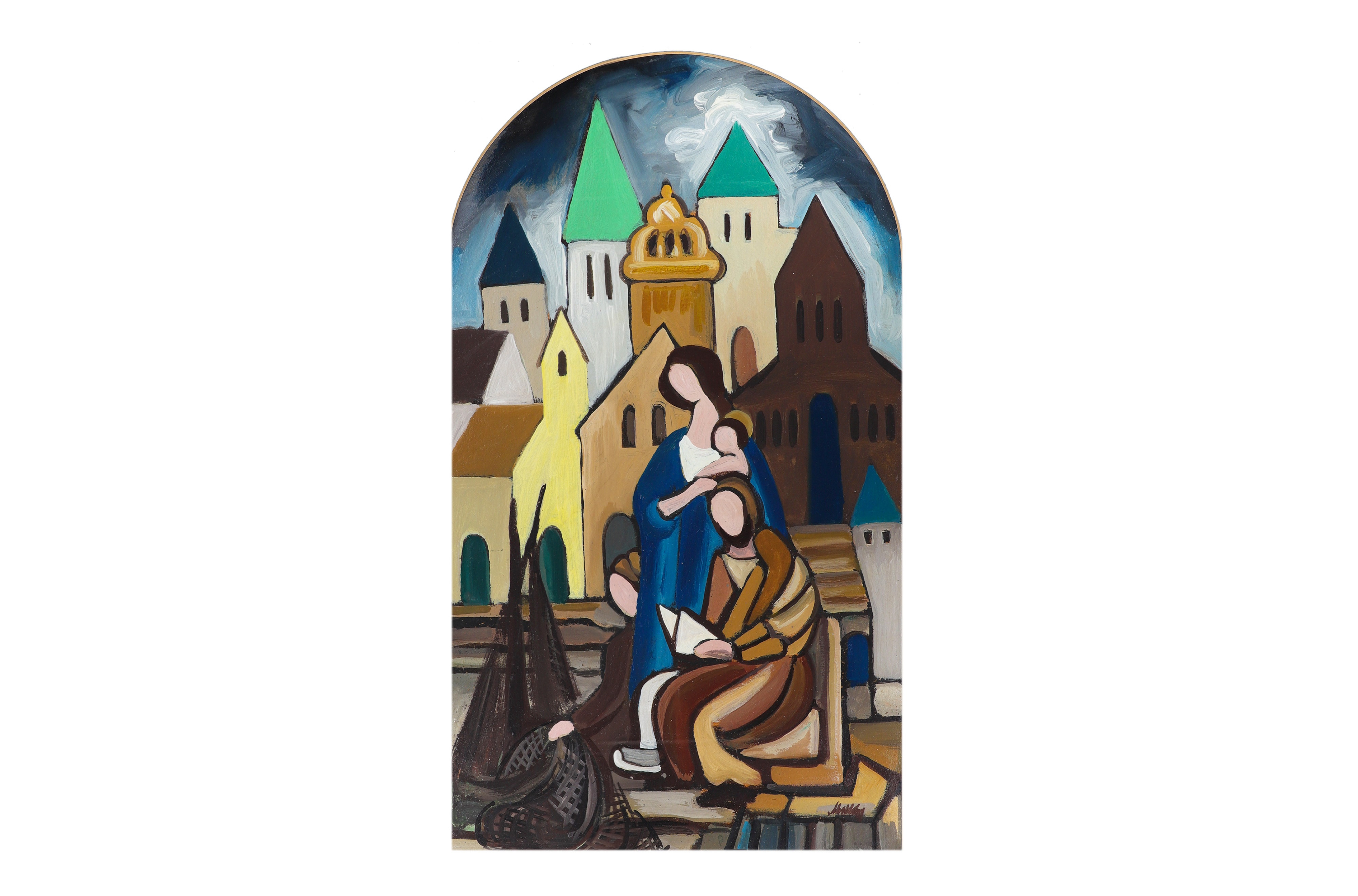Spotligh on an Artist: Markey Robinson (1918 - 1999)
A typical bohemian artist, Robinson was eccentric in his nature
11/08/2023 Artworks

David Marcus Robinson, or Markey, as he became fondly known in the art world, was born in Belfast in 1918. Both his father and grandfather were painter-decorators, and this is likely where his influence came from. Like many artists, he dabbled in many careers before he found his footing as a creative and lived many lives. Before the second world war, he spent a period as a successful featherweight boxer using the name Boyo Marko. After serving in the war, where he was a part of the Casualty Service of the Civil Defence, he returned to Belfast and studied for a short time at the Belfast School of Art. His time at the school did not last too long, as he soon became a sea merchant, disappearing for long periods of time and returning with a number of finished works which were thought to have been painted at sea.
At the beginning of his career, Robinson would sell his paintings, as many budding artists still do today, on the railing of St. Stephen’s Green in Dublin. He began to exhibit with the Ulster Academy of arts and Heals Mansard gallery in London in traditional manners before experimenting with more contemporary exhibition approaches, holding shows in the foyers of theatres and in cafes in Belfast. Continuing with the artists’ tradition of having many feathers in their cap, Robinson turned his hand to toymaking in the 1950s. Throughout the sixties and seventies, he continued to show across Ireland and the UK, even exhibiting his works in Paris at one point.
A typical bohemian artist, Robinson was eccentric in his nature. He was egotistical and would argue with those in Belfast city centre about the government not supporting his work. However, his behaviour became difficult for his family to live with and eventually his wife and daughters left him in Belfast for life in America. He became lonely when his family left and was distressed by the troubles and so in 1973 moved to Dublin where by 1975, he was living above the Oriel gallery.
Robinson’s works are easily spotted among a large group. His paintings are often regarded as unfinished, most likely due to the lack of detail and depth in composition. The subject matter is often of landscapes, rural scenes showing figures without faces, and generally simplified content. A small number of Robinson’s works were shown during his lifetime, as dealers and buyers were only interested in these simple landscapes and not more specialised pieces that he had painted. In this month’s sale we have an example of one of Markey Robinson’s more niche works.
Lot 579 shows a figural group including the Virgin Mary and child, behind a figure most likely portraying Joseph. The subject matter of this work differs to the scenes popular at the time in both Robinson’s works and his contemporaries, of the west of Ireland; a repetitive subject that “bled Markey dry of creative originality”, according to Peter Murray of the Crawford Gallery.
A figure towards the rear of the group holds a fishing net. It is likely that this scene is showing fishermen being blessed by the holy family. Being a seafarer, Robinson knew the importance of fishing for sustenance and the livelihood depended on by fishermen. The medium and style are consistent with his works, using strong, thick lines and bold colours in definite shapes to display his subject matter in a simple yet bold manner.